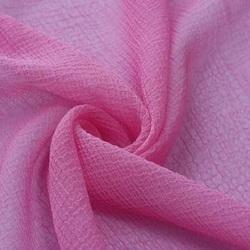Lesson 10:
Types of Fabrics
Cotton - regular cotton fabric
Silk cotton - used for blouses. Lots of varieties available ranging from 45rs to 500rs.
Silk - used as sarees
Spun - which will get loops on wash.
Satin -shiny softy. Good for smoking works and party frocks
Velvet - furry fabric used for yoke or borders.
Brocade with thread - chanderi or cotton with thread weaved design
Brocade with zari - chanderi or cotton with zari weaved design
Silky Brocade - soft silky with zari weaved
Rawsilk - rough textured shiny
Santoon - soft shiny like satin
Polysilk - type of silkcotton with more cotton mix
Crepe - soft smoothy. Seen as Mysore crepe silk sarees
Poplin - thick cotton used for petticoats and shimmes
Long cloth - lighter than poplin used to do salwar pants and frocks. Good for embroidery works
Mul cotton - thin cotton. Used for baby dresses & napkins.
Jute - jute bag texture rough and dry
Lenin - handloom material with mix of silk and cotton
Reyon - a variety of spun. Mostly used for top and patiyala bottom
Tussar- variety of soft silk flowy
Buttersilk - paper texture silky
Chanderi - silkcotton variety. Will be stiff.
Net - thin transparent with holes.
Hacoba - eyelet cutwork fabric. Pure cotton
Chicken work - shadow work fabric
Printed crape - soft printed used for salwar suits top
Crushed crape - crushed will have lines texture. Salwar suits +& sarees available
Handloom cotton - pure cotton. Little rough texture.
2*1 cotton thicker than mulcotton. Used as linning cloth for all dresses
2*2 cotton - thin quality cotton used for blouses
Chiffon - dupatta material
Georgette embroidery saree material. Rough texture
Viscose - thin chiffon with crushed texture
Garden - Material crushed Georgette variety. Comes as garden saree
Kalamkari - hand block print and hand painted fabric
Ikkat - weaved handloom cotton
Agrakh - Jaipur block print
Batik - poplin fabric with block prints
Bandhini- mulcotton tied and designed
Lehria - chiffon fabric tied as lines design
Chettinard cotton - handloom cotton used as sarees
Bagalpuri - jute mix silk fabric. Used as dupatta or saree
Hope I covered most of using fabrics
Happy sewing
Thank you




















































